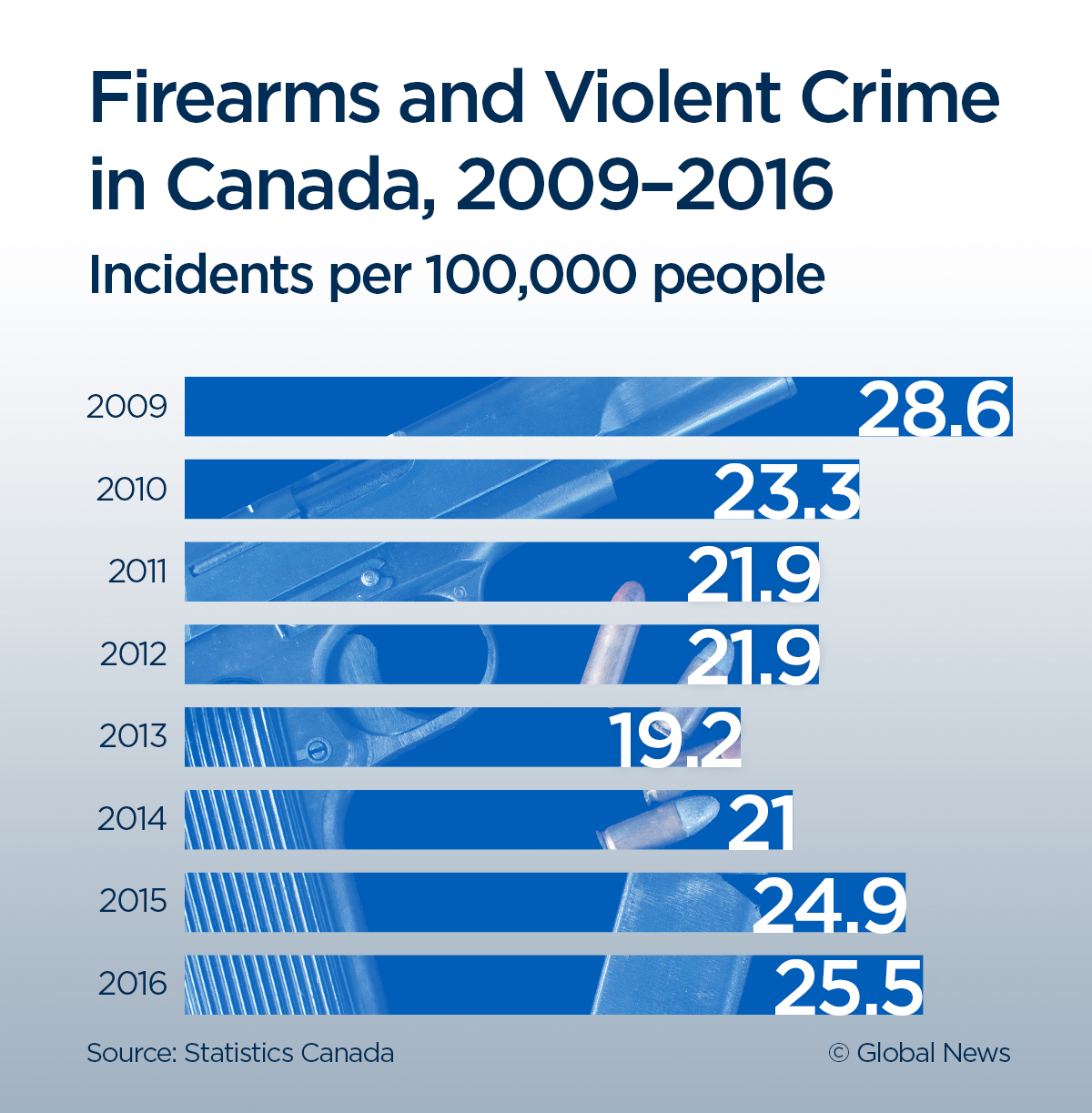Guns have been back on the public agenda for months now, thanks in part to a new Liberal gun control bill (a relatively modest one, as I’ve previously argued), and also a wave of shootings in Toronto. But it’s certainly fair to say that the Danforth attack has kicked the gun control debate up a notch or two.

Toronto City Council, for instance, just passed motions calling for new restrictions on the sale, purchase and potentially even the possession of handguns and related ammunition. The federal government has said that it’s looking at all options. It won’t rule out a handgun ban.
Along with the renewed debate comes extra media coverage. It’s been a long-standing concern of mine that the Canadian media does a terrible job covering guns. It’s a complicated public policy file that too few journalists put any time and energy into studying. That was evident again this week.
On Tuesday, iPolitics reported on new gun crime stats. The article says that handgun sales in Canada surged after former prime minister Stephen Harper scrapped the long-gun registry in 2012. This is true, but handguns are not long guns. Handguns are still registered in Canada. Handguns have been registered in Canada since before the Second World War. Scrapping the gun registry didn’t change anything, at all, related to handguns.
iPolitics is confusing correlation with causation. The scrapping of the long gun registry could have had an indirect impact on handgun sales — maybe target shooters were happy and went on a shopping spree (that lasted years). There were other changes to the laws at the time, and some that related to handguns and other restricted firearms, but again, nothing that would itself directly explain a boom in sales. Personally, I suspect a stronger Canadian dollar is most of the answer.
READ MORE: Canadians could face prison time for making 3D-printed guns, officials say
This isn’t great, but it’s a mistake frequently made by Canadian reporters and commentators, who don’t know a long gun from a handgun, or how or why our law treats them differently.
But the iPolitics article goes on to then make an error of a completely different magnitude than the relatively mundane (though inaccurate) conflation of long guns and handguns under Canadian law.

Get breaking National news
Let me quote directly from the iPolitics piece.
That’s the quote. The implication, I think, is clear: a big spike in handgun ownership after the scrapping of the long gun registry led to a 33 per cent spike in firearm-related violent crime.
That’s nonsense. And the very Statistics Canada data Naumetz cites not only shows this, it explicitly spells it out.
The year cited by Naumetz, 2013, was a year with a markedly lower rate of violent gun crime. The 33 per cent rise in violent gun crime that is a key part of the iPolitics report isn’t a surge or a spike at all. It’s simply a return to the norm.

WATCH: Trudeau pressed on handgun law reform while at Danforth funerals
This is not buried in the fine print. This is not a footnote. This is not otherwise hidden. This is presented clearly in the main body of the Statistics Canada report, directly under a full-size chart that also clearly shows that the post-2013 surge is a statistical blip, not a crime wave.
Take a look at the graph below, produced using Statistics Canada’s numbers, showing the rate of police-reported firearms-related violent crime per 100,000 citizens using the same dates the Statistics Canada report used: 2009 to 2016 (the 2017 numbers are not yet available). You’ll note that 2013 is well to the low-side of all the other numbers, and that the overall trend is generally flat.
SEE BELOW: Firearms and violent crime in Canada, 2009-2016.
But now let’s present the numbers as iPolitics did, using 2013 as the starting point.
SEE BELOW: Firearms and violent crime in Canada, 2013-2016.
The difference is striking. The second chart creates an impression of a sudden surge in violent gun crime in Canada — one which started right after the long gun registry was scrapped by the previous Conservative government. The first chart above shows the true story.
This isn’t a denial of the problem, nor a dismissal of anyone who’s concerned. The 2017 numbers could well be catastrophic; certainly, no one who lives in Toronto this summer can afford to take lightly the problem of gun violence. This is a conversation we need to have.
But it’s a conversation we need to have based on a fair and accurate understanding of the facts. That has to start with our news media giving the public the real story.
This is literally the media’s job. It has never done it well on any matter related to gun control in this country. This iPolitics piece, sadly, was no exception. By providing skewed information, not to mention a flawed overall argument, it let readers down. And this debate is too important to allow that to go unchallenged.
Matt Gurney is host of The Exchange with Matt Gurney on Global News Radio 640 Toronto and a columnist for Global News.














Comments